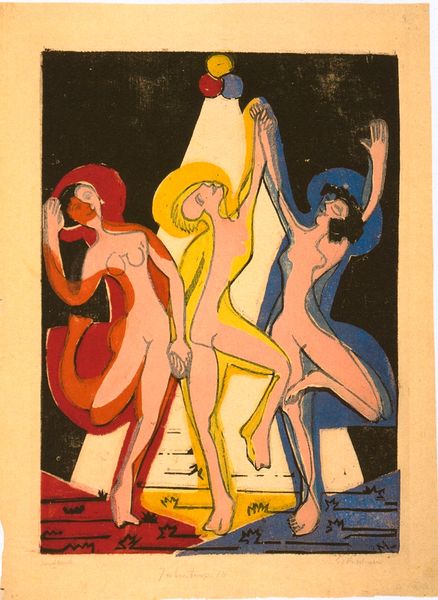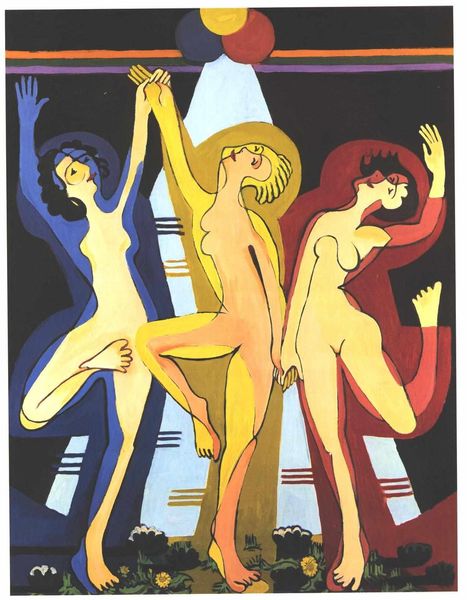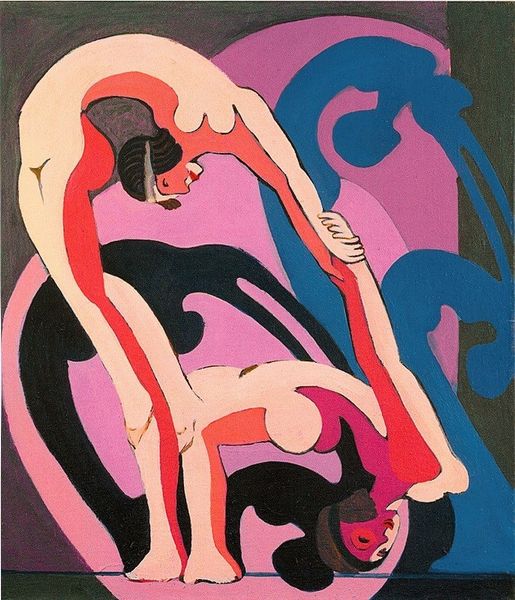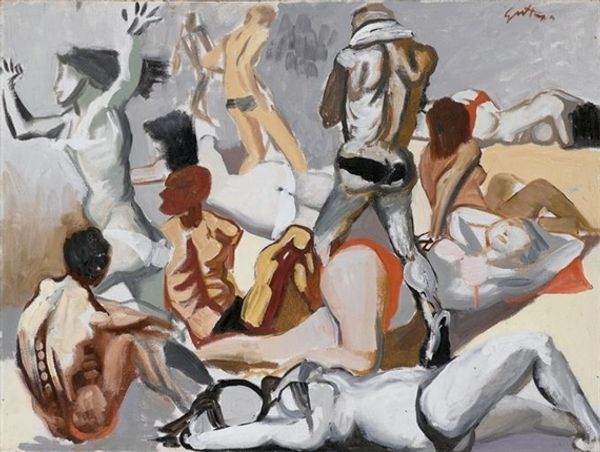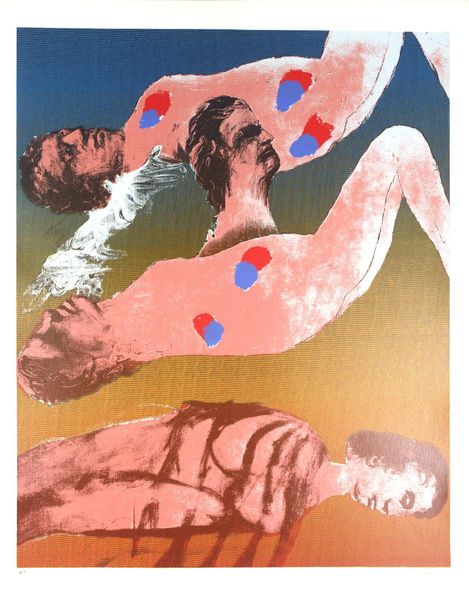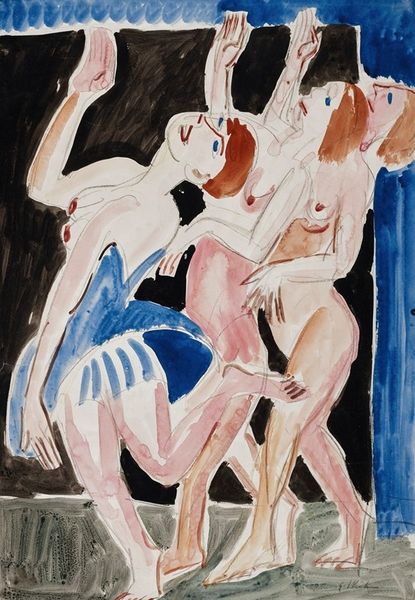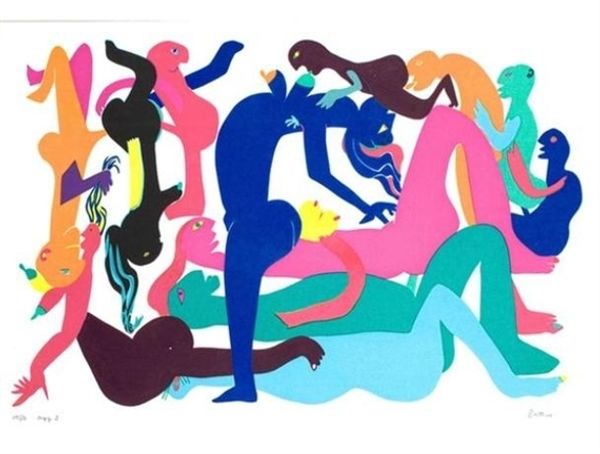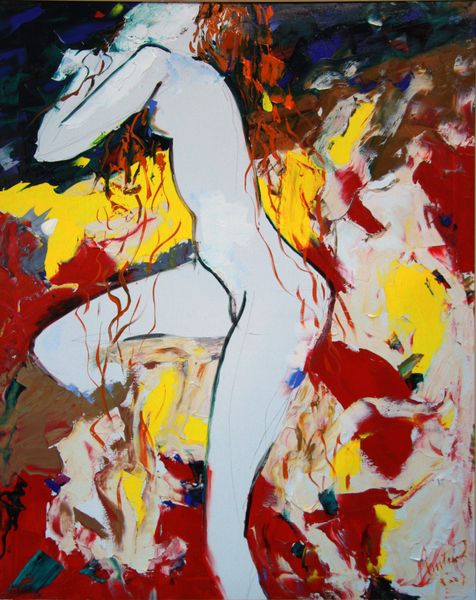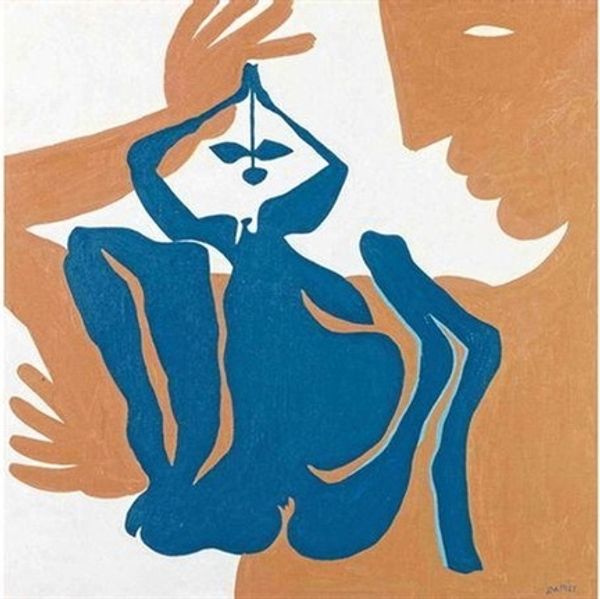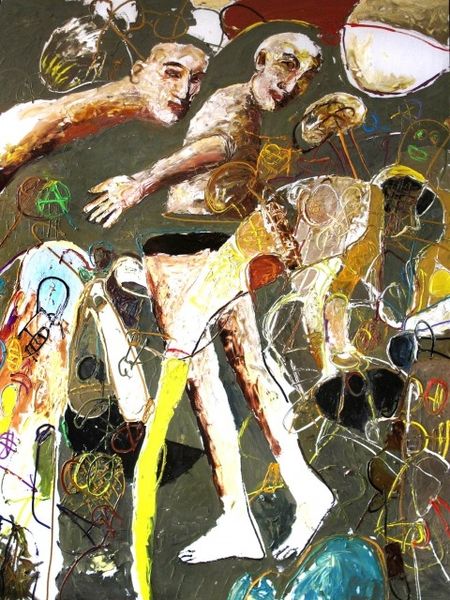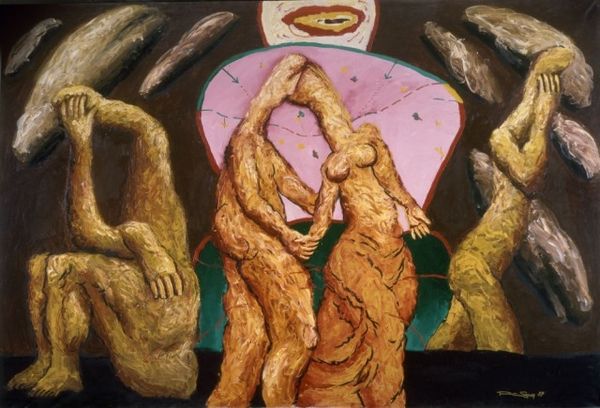
Copyright: Patrick Caulfield,Fair Use
Editor: Here we have Patrick Caulfield's 1999 acrylic on canvas, *Les Demoiselles d'Avignon vues de derrière*. I find it playful, almost like a cut-out book illustration for adults. What historical baggage do you think it carries? Curator: Interesting choice of words. It’s tempting to see this work only in its dialogue with Picasso’s radical reimagining of perspective, but this image is filtered through decades of Pop Art. Caulfield uses clean, flat colours that recall graphic design to present a caricature. This is cultural memory made immediate. Does the reduction to essential form dilute Picasso’s challenge, or does it highlight the artifice inherent in representation? Editor: It definitely simplifies it! Is he trying to critique high art by turning it into something so...accessible? Curator: Perhaps. The use of acrylic flattens everything, denies texture, embraces the manufactured. Are we meant to reconsider Picasso's challenge to Western traditions through this simplified visual vocabulary? Or is there something else entirely at play? This work engages in dialogue not only with art history but also with the rapid proliferation and consumption of images in our contemporary moment. Editor: So, beyond being a reference, it's kind of its own statement about how we see and remember famous art? Curator: Exactly. What’s interesting to you is that this artist highlights an inherent flattening which results from familiarity. This isn’t simply an act of homage, but an engagement with art history itself and the flattening inherent in viewing. By presenting us with "the behind," what does Caulfield suggest about access and perspective? Editor: I guess I hadn’t thought about how much changes when we look at something familiar from an unusual angle. This has given me a completely new way of seeing this piece... and Picasso too, really! Curator: It speaks to the continuous layering of meaning within imagery. And the recognition of art and symbols can be continually revisited with the progress of time.
Comments
No comments
Be the first to comment and join the conversation on the ultimate creative platform.
